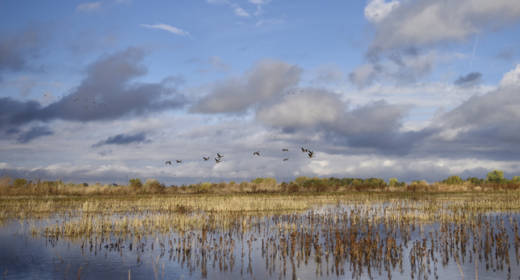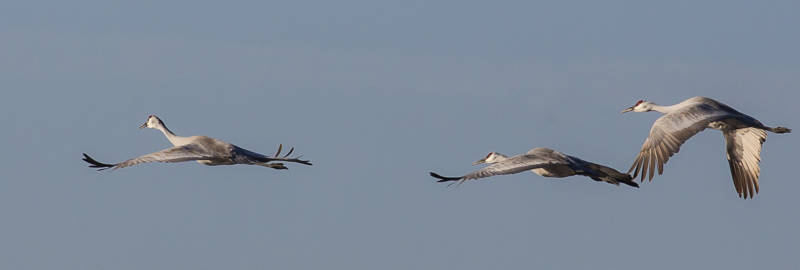An innovative scheme to leverage Central Valley farmland as temporary wetlands on the Pacific Flyway helped birds navigate California’s five-year drought, according to a new analysis.
More than four years ago, in the midst of California’s most punishing drought on record, conservation groups began working with growers and citizen scientists to identify and maintain habitat for wetland birds on agricultural land, as KQED reported. The Central Valley is in the middle of the Pacific Flyway, and millions of birds stop to rest at wetlands in the region during their migrations.
Since more than 90 percent of historically occurring natural wetlands in the Central Valley are gone, largely displaced by agriculture, the birds have to work with what’s there. So, conservation groups devised a strategy to help them out: The Nature Conservancy and the Natural Resources Conservation Service started paying rice farmers to keep their fields flooded during the post-harvest months, allowing migratory birds to take refuge in these “pop-up wetlands.” For farmers and conservationists, participating in this type of incentive program was risky: farmers had to put in additional labor, the conservation groups offset the estimated costs, and neither group knew for sure whether the plan would actually work.
But now enough time has elapsed to get some answers. Researchers used satellite data to understand how wetland bird habitat changed over the course of the drought and to estimate how much the incentive programs for farmers helped.
From satellite images taken between 2000 and 2015, the researchers could detect how much open water was available for birds during non-drought, moderate drought, and severe drought years. They found that the severe drought dramatically reduced available wetland habitat, with declines of up to 80 percent in agricultural areas and up to 60 percent in managed wetlands.


